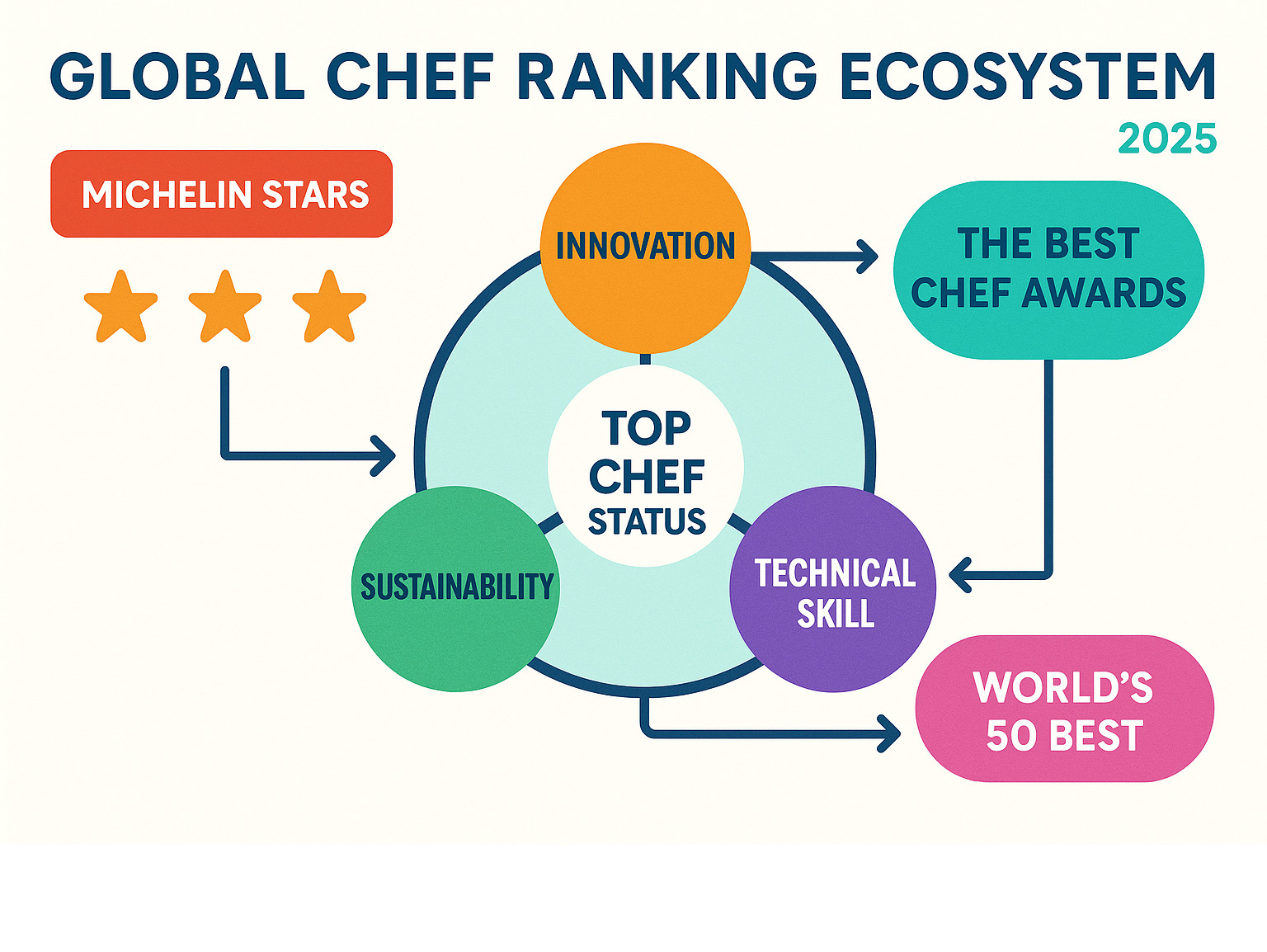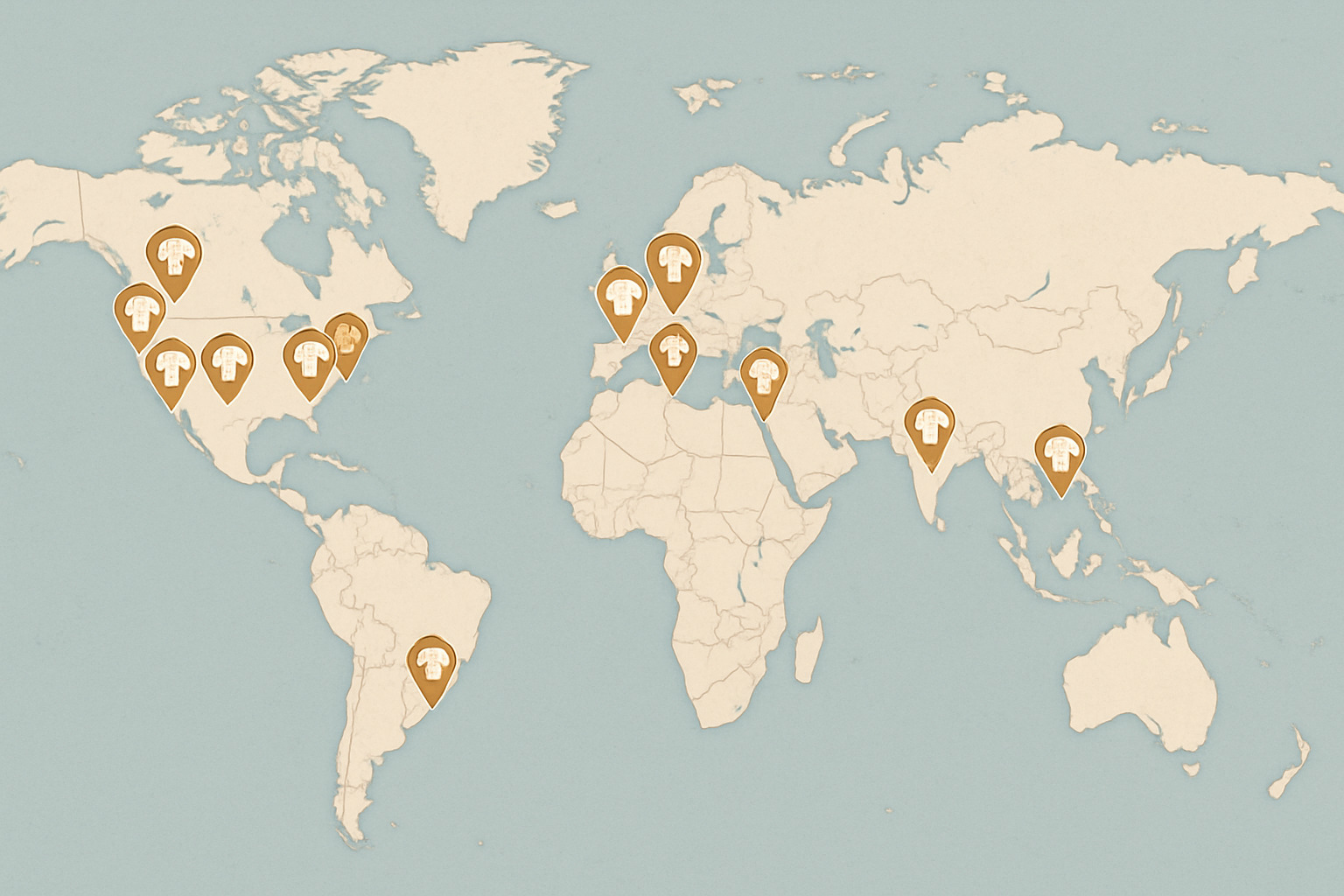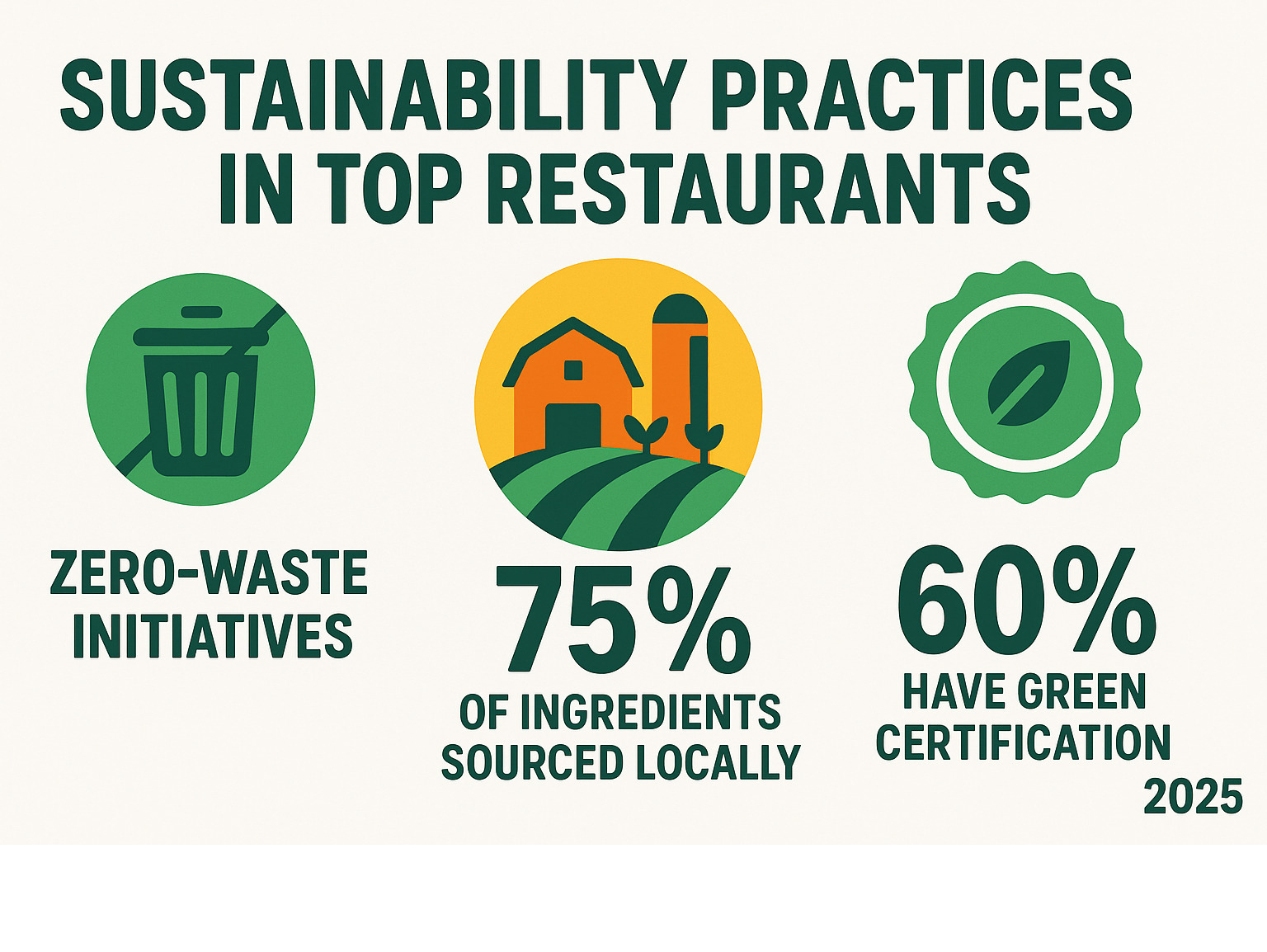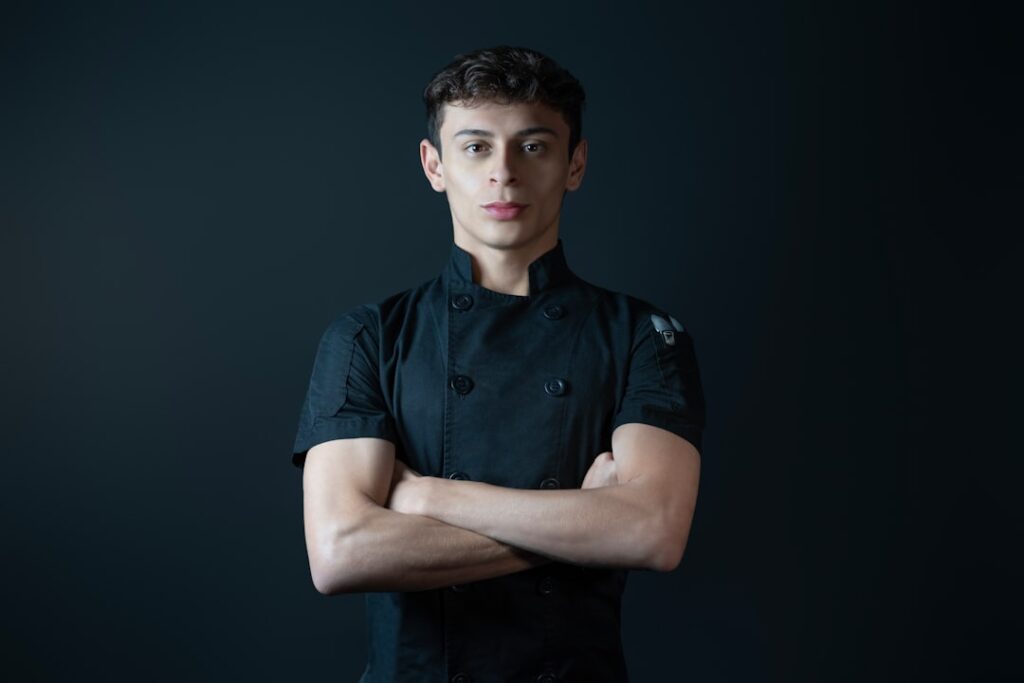What Makes a Chef the Best in the World?
Determining who is the top chef in the world is complex, as different awards use various criteria. Here’s who currently holds the top spots:
Current World Leaders (2024-2025):
- Dabiz Muñoz – #1 by The Best Chef Awards 2022
- Alain Ducasse – Most Michelin stars (21 total)
- René Redzepi – #2 by The Best Chef Awards, pioneered New Nordic cuisine
- Massimo Bottura – 3 Michelin stars, ranked #1 twice on World’s 50 Best
The culinary world doesn’t have one single “champion” like sports. Instead, multiple prestigious organizations crown their own winners using different methods. The Michelin Guide focuses on technical excellence and consistency. The Best Chef Awards evaluates innovation and global impact. The World’s 50 Best Restaurants considers overall dining experience and industry influence.
What makes this fascinating for food travelers is that each ranking system reveals different aspects of culinary greatness. Some chefs excel at traditional techniques, others push boundaries with molecular gastronomy, and many champion sustainability and local ingredients.
The competition has never been fiercer. Today’s top chefs aren’t just cooking – they’re scientists, artists, activists, and business leaders. They’re changing how we think about food while creating experiences that draw travelers from around the globe.
Whether you’re planning your next food trip or simply curious about culinary excellence, understanding these rankings helps you find the restaurants and chefs truly worth seeking out.

Basic top chef in the world glossary:
What Defines the Top Chef in the World?
Figuring out what makes a top chef in the world is like trying to understand what makes a great artist or musician. It goes way beyond just making food that tastes amazing.
The world’s best chefs are part scientist, part artist, part business leader, and part cultural ambassador all rolled into one. They’re running complex operations while creating dishes that can literally move people to tears.
What’s really fascinating is how top chef in the world contenders now treat their kitchens like laboratories. Chefs like Ferran Adrià changed everything when they started experimenting with molecular gastronomy. Suddenly, cooking became about understanding the science behind why flavors work together and how to create completely new textures.
But the best chefs aren’t just playing with fancy techniques for show. They’re using this knowledge to create experiences that connect with people on a deeper level.
Sustainability has become just as important as technical skill. The culinary world finally woke up to its environmental impact, and now the top chef in the world rankings consider how chefs source ingredients and treat their communities. Michelin even introduced Green Stars in 2020 to recognize restaurants making real environmental efforts.
Take Massimo Bottura’s Food for Soul foundation, which turns food waste into community meals. That’s the kind of work that separates good chefs from truly great ones.
Key Criteria Every “top chef in the world” Must Meet
When you break down what separates the culinary elite from everyone else, it really comes down to four main things that every top chef in the world has mastered.
Innovation is probably what most people notice first. The best chefs find ways to honor traditional cooking while pushing it somewhere completely new. Gaggan Anand took classic Indian flavors and combined them with cutting-edge techniques. The result? Something that had never existed before but still felt deeply rooted in tradition.
Consistency might be less glamorous, but it’s what separates the legends from the one-hit wonders. Michelin inspectors don’t just show up once. They come back again and again, sometimes over years. One bad night can cost you everything you’ve worked for.
Leadership in today’s culinary world means way more than just running a kitchen. Thomas Keller manages multiple three-Michelin-starred restaurants while finding time to consult on movies. These chefs are building global empires and influencing how entire industries think about food.
Guest Experience ties everything together. Anne-Sophie Pic earned 8 Michelin stars despite having no formal culinary training because she understood something crucial: technical skill means nothing if it doesn’t translate into memories that guests carry with them forever.
Comparing Michelin, The Best Chef Awards, World’s 50 Best
Different organizations look for completely different things when crowning their version of the top chef in the world.
The Michelin Guide is like the strict professor who grades purely on technical merit. Their anonymous inspectors use five specific criteria: ingredient quality, cooking technique, harmony of flavors, how well the chef’s personality comes through in the food, and consistency. That’s why Alain Ducasse leads with 21 total Michelin stars across his restaurant empire.
The Best Chef Awards takes a much broader view. They care about innovation, global impact, and how much influence you have on the industry alongside your technical skills. This approach is why Dabiz Muñoz topped their 2022 rankings. His avant-garde work at DiverXO isn’t just great cooking – it’s reshaping how people think about Spanish cuisine.
The World’s 50 Best Restaurants focuses on the complete experience. Their academy of over 1,000 international food experts votes based on actual dining experiences, considering everything from service to atmosphere to cultural significance. This explains why places like Copenhagen’s Noma consistently rank at the top.
Global Rankings & Awards Spotlight
The world of culinary awards is like a fascinating puzzle where each organization holds a different piece of what makes a top chef in the world. Think of it as the culinary equivalent of film awards – you have your Oscars, Golden Globes, and Cannes, each celebrating different aspects of excellence.
The Michelin Guide remains the granddaddy of them all, setting standards that have shaped professional cooking for over a century. Explore Michelin Guide standards to see exactly how they make their decisions. Their star system is so powerful that earning just one star can literally change a chef’s life overnight.
The Best Chef Awards brings a fresh perspective to the table, launched specifically to give global recognition beyond the traditionally European-focused systems. Their 2022 Top 100 list featured chefs from over 30 countries, proving that culinary excellence truly knows no borders.
The World’s 50 Best Restaurants takes a completely different approach by focusing on the total dining experience. They’re not just judging the food – they’re considering everything from the moment you walk in until you leave.
The Bocuse d’Or stands apart as pure culinary theater. Held every two years in Lyon, France, it’s essentially the Olympics of cooking. Picture this: the world’s most talented chefs cooking under intense pressure while crowds cheer.
How Awards Crown a “top chef in the world”
When Dabiz Muñoz claimed the #1 spot in The Best Chef Awards 2022, something magical happened. Suddenly, DiverXO’s reservation system went into overdrive, with wait times stretching for months. Food lovers from around the globe started planning trips to Madrid just to experience his wild fusion of Asian and Spanish techniques.
This is the real power of these awards – they don’t just recognize excellence, they create it. When René Redzepi and Noma started dominating lists, they launched an entire movement called New Nordic cuisine, inspiring thousands of chefs to look at local ingredients with fresh eyes.
Restaurants with major awards can command premium prices and become destination restaurants – places so special that people plan entire vacations around a single meal.
Special Categories That Matter
The beauty of modern award systems is that they recognize culinary excellence comes in many flavors. The Innovation Award celebrates chefs who are literally inventing the future of food. The Pastry Award gives sweet creations their due respect.
The Rising Star category is particularly exciting for food travelers. These awards often predict who will be the next big name before they explode onto the scene.
Sustainability badges have become increasingly important, reflecting how our values around food are evolving. Michelin’s Green Star recognizes restaurants that are doing exceptional work for the environment.
These specialized categories prove that being a top chef in the world isn’t just about one type of excellence. The diversity makes the culinary world endlessly fascinating to explore.
Meet the Current Top Chefs Across Continents

The search for the top chef in the world takes us on a delicious journey across every continent. Each region brings its own flavor to the global conversation about culinary excellence, creating a rich mix of cooking styles and philosophies.
Europe’s Titans of Taste
Dabiz Muñoz sits at the top of the culinary world right now, holding the #1 spot in The Best Chef Awards. His Madrid restaurant DiverXO serves up the kind of food that makes you question everything you thought you knew about fusion cuisine. Muñoz takes Spanish soul food and gives it an Asian makeover that somehow makes perfect sense.
His menu reads like poetry written by someone having fever dreams. Dishes with names like “The Pig That Wanted to Be a Shark” sound ridiculous until you taste them. Then you realize this guy isn’t just cooking – he’s creating edible art that happens to be absolutely delicious.
Massimo Bottura proves that respecting tradition and embracing innovation aren’t opposites. His three-Michelin-starred Osteria Francescana in Modena has topped The World’s 50 Best Restaurants twice. Bottura takes classic Italian grandmother recipes and lifts them using French techniques.
His famous “Five Ages of Parmigiano Reggiano” dish shows how one ingredient can tell five different stories on a single plate. But Bottura’s real genius shines through his Food for Soul foundation, which transforms food waste into dignified meals for people in need.
Anne-Sophie Pic breaks every rule in the book. She never went to culinary school, yet she’s earned 8 Michelin stars across her restaurant empire. As one of only four women holding three Michelin stars, she’s proven that talent and determination matter more than traditional training paths.
Americas’ Culinary Trailblazers
Thomas Keller represents American fine dining at its absolute peak. He’s the only chef operating two three-Michelin-starred restaurants simultaneously – The French Laundry in California and Per Se in New York City. His attention to detail borders on obsession.
Anthony Bourdain once called The French Laundry “the best restaurant in the world, period,” and it’s hard to argue. Keller’s influence extends far beyond his own kitchens through the countless chefs he’s mentored.
Mauro Colagreco brings South American passion to French precision at Mirazur in Menton, France. His restaurant topped The World’s 50 Best in 2019. His unique position on the French-Italian border creates a melting pot of Mediterranean ingredients, Argentine influences, and French technique.
Asia & Oceania’s Avant-Garde Masters — another look at the “top chef in the world”
René Redzepi revolutionized global cuisine from Copenhagen. His restaurant Noma earned the #2 spot in The Best Chef Awards by proving that extraordinary cuisine could come from ingredients most chefs completely ignored. His team forages for wild herbs, ferments vegetables for months, and serves dishes that taste like concentrated essence of Scandinavian forests.
Gaggan Anand represents the exciting future of Indian cuisine on the world stage. His progressive Indian restaurant in Bangkok became the first Indian establishment to crack The World’s 50 Best top 10. Training with Ferran Adrià’s team gave Anand molecular gastronomy techniques that he applies to traditional Indian flavors.
Yoshihiro Murata proves that innovation doesn’t require abandoning tradition. His three-Michelin-starred Kikunoi in Kyoto has operated for over 400 years, with Murata representing the third generation of his family to lead this legendary kitchen.
How Media & Competitions Shape the “top chef in the world” Narrative
The modern conversation about who deserves the title top chef in the world has been completely transformed by television and digital media. What once relied purely on restaurant critics and industry insiders now includes millions of viewers who form opinions based on what they see on screen.
Television cooking shows have created an entirely new pathway to culinary fame. Shows like Top Chef have become launching pads for careers, with contestants gaining instant recognition that would traditionally take decades to build.
Social media has added another layer to this evolution. Chefs now build personal brands through Instagram posts, TikTok videos, and YouTube channels. A single viral video can introduce a chef’s techniques to millions of home cooks worldwide.
Netflix’s Chef’s Table series has become particularly influential, turning featured chefs into household names while maintaining focus on serious culinary artistry.
Television’s Role in Chef Stardom
The power of television to create culinary celebrities cannot be overstated. Gordon Ramsay perfectly illustrates this phenomenon – while his seven current Michelin stars are impressive, they pale beside Alain Ducasse’s twenty-one. Yet Ramsay’s global recognition far exceeds most technically superior chefs thanks to his television empire.
This creates fascinating dynamics in determining the top chef in the world. Traditional measures like Michelin stars don’t always align with public recognition. A chef might operate the world’s most technically perfect restaurant but remain unknown outside culinary circles.
Hell’s Kitchen broadcasts in over 200 territories worldwide, introducing Ramsay’s personality and standards to audiences who might never visit a fine dining restaurant.
Competition Kitchens vs. Real-World Restaurants
The high-pressure environment of televised cooking competitions creates compelling television but tells only part of the story about culinary excellence. Restaurant success requires consistency over months and years, while competition cooking demands peak performance under artificial time constraints.
Competition formats test valuable skills that translate to professional kitchens. Quick decision-making under pressure, adaptability when ingredients fail, and grace under stress all matter tremendously during busy restaurant service.
However, a true top chef in the world must deliver excellence night after night, manage complex teams, control food costs, and create profitable businesses. Competition success provides valuable exposure but represents just one aspect of comprehensive culinary leadership.
Shop Bravo’s Top Chef gear has become its own phenomenon, allowing fans to connect with the show beyond just watching.
Emerging Trends from the World’s Best Kitchens
The kitchens of today’s top chef in the world candidates are laboratories of change, where culinary innovation meets social responsibility. These leaders aren’t just creating incredible dishes – they’re reshaping how we think about food’s role in our world.
Walk into any elite restaurant today and you’ll notice vegetables taking center stage in ways that would have seemed impossible a decade ago. This plant-forward approach celebrates vegetables as the stars of the show. Dan Barber at Blue Hill has proven that a carrot can be just as exciting as a perfectly aged steak.
The zero-waste movement has transformed from environmental necessity into creative goldmine. Massimo Bottura’s genius lies in turning what others might discard into culinary treasures. His “bread is gold” philosophy creates some of the most innovative dishes you’ll ever taste.
Immersive dining experiences are redefining what it means to eat at a restaurant. Chefs are creating theatrical presentations where the meal becomes performance art.
Sustainability as a Core Metric

When Michelin introduced Green Stars in 2020, they were acknowledging that environmental responsibility now defines culinary excellence. These stars recognize restaurants that prove sustainability and exceptional cooking aren’t just compatible, they’re inseparable.
When a top chef in the world prioritizes local sourcing, entire supply chains adapt. René Redzepi’s foraging practices at Noma inspired thousands of chefs worldwide to explore their own local ecosystems and reduce their carbon footprints.
Community engagement has become equally crucial. Chefs like Selassie Atadika demonstrate how culinary excellence can preserve cultural heritage while addressing social issues.
The most inspiring part? These initiatives often make restaurants more profitable, not less. Reducing waste cuts costs. Local sourcing builds community relationships that benefit everyone.
Tech & Science in Haute Cuisine
Step into a modern elite kitchen and you might think you’ve entered a science lab. Molecular gastronomy equipment sits alongside traditional copper pots, and chefs discuss pH levels with the same passion they once reserved for knife techniques.
Yannick Alléno’s patented Extractions® technique represents this evolution perfectly. His specialized equipment concentrates flavors and creates textures impossible through traditional methods. The technology serves the flavor, not the other way around.
Chef activism has emerged as another defining trend. Today’s top chef in the world candidates use their platforms to address everything from climate change to social justice.
The most successful chefs accept technology and science while never forgetting that cooking is ultimately about creating joy. That human connection remains the heart of what makes someone truly deserving of the title top chef in the world.
Frequently Asked Questions about the Top Chef in the World
How is “top chef in the world” officially determined?
There’s no single authority crowning one top chef in the world, and that makes the culinary world much more interesting. Different organizations look for different qualities, creating a rich mix of recognition.
The Michelin Guide grades on technical perfection. Their anonymous inspectors evaluate ingredient quality, cooking technique, flavor harmony, how the chef’s personality shines through their dishes, and consistency.
The Best Chef Awards considers innovation, global influence, and how much a chef pushes the industry forward. This is why Dabiz Muñoz claimed their #1 spot in 2022.
The World’s 50 Best Restaurants focuses on the complete experience. Their international panel considers everything from service to atmosphere to cultural significance.
The beauty lies in this diversity. Each ranking system reveals different aspects of what makes dining truly special.
Which chef currently holds the most Michelin stars?
Alain Ducasse leads with 21 Michelin stars across his global restaurant empire. His 34 establishments span three continents, with three-star restaurants in Paris, Monaco, and London. He was the first chef to achieve this geographic hat trick.
What makes Ducasse’s achievement remarkable is that each restaurant reflects its location while maintaining his exacting standards. His Le Louis XV in Monaco showcases Mediterranean luxury, while his Dorchester restaurant in London brings French technique to British ingredients.
The late Joël Robuchon still holds the all-time record with 32 Michelin stars at the time of his passing in 2018.
Do TV competitions really influence global rankings?
Television competitions create fascinating dynamics in the culinary world, but their influence on formal rankings is complex. Shows like Top Chef don’t directly impact Michelin stars, but they absolutely transform careers and public perception.
Gordon Ramsay illustrates this perfectly. He holds 7 current Michelin stars, far fewer than Alain Ducasse’s 21. Yet Ramsay is arguably the most famous chef globally thanks to his television empire.
The key difference lies in audience reach. Traditional culinary awards influence industry professionals. Television reaches millions of households, creating celebrity status that can be more valuable than formal recognition.
The most successful modern chefs understand that media savvy and culinary excellence work together rather than competing.
Conclusion & Plan Your Culinary Journey
The quest to identify the top chef in the world reveals something wonderful about modern cuisine – there isn’t just one answer, and that’s exactly what makes food travel so exciting. We’ve finded a constellation of culinary stars, each shining in their own unique way.
Dabiz Muñoz impresses with avant-garde creativity. Alain Ducasse demonstrates technical mastery across 21 Michelin-starred establishments. René Redzepi proves that sustainable innovation can revolutionize entire culinary movements. Massimo Bottura shows us that great chefs can feed both souls and communities.
This diversity creates incredible opportunities for food travelers who want to taste the world’s best cuisine.
Planning your culinary trip starts with understanding what speaks to your palate and values. Are you drawn to molecular gastronomy experiments in Copenhagen? Time-honored kaiseki traditions in Kyoto? Boundary-pushing fusion creations from Madrid? Each represents a different but equally valid approach to culinary greatness.
Book well in advance for top-tier establishments – restaurants like Noma and The French Laundry often have waiting lists stretching months into the future. Part of the excitement comes from the anticipation and planning.
Consider the complete journey, not just the meal. Many of the world’s best restaurants operate in destinations worth exploring beyond the dining room. A trip to experience Thomas Keller’s precision at The French Laundry becomes even richer when combined with Napa Valley’s wine country.
Dine responsibly by supporting restaurants that align with your values. Whether that’s sustainability, community engagement, or cultural preservation, the best chefs understand that great cuisine carries responsibility.
The conversation about who deserves the title top chef in the world will keep evolving as new talents emerge and established masters push fresh boundaries. That’s what makes this journey so thrilling – there’s always another incredible meal waiting to be finded.
Ready to start planning your own culinary expedition? Our comprehensive guide to Best Chef in the World: Who Holds the Crown? offers detailed restaurant recommendations and essential booking tips to help turn your food dreams into delicious reality.








